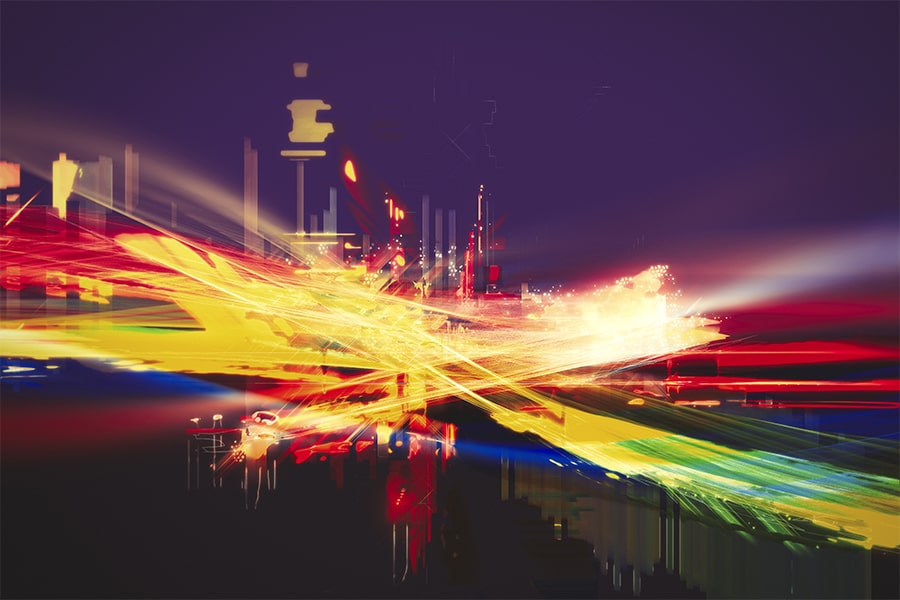
Another Dimension: Augmented Reality Redefines Public Art
By Scottie Barsotti
Public art installations can make spaces beautiful and spark conversations, but they also can blend into the urban landscape, limiting discussion and engagement.
"We know in Pittsburgh that our public art can stir dialogue, sometimes significant dialogue, around social justice issues. But we really haven't figured out a way to communicate with the populace around it," said Brett Ashley Crawford, executive director of CMU's Arts Management & Technology Laboratory (AMT Lab) and associate teaching professor for the Master of Arts Management program, a joint program between the Heinz College for Information Systems and Public Policy and the College of Fine Arts.
A central question for Crawford is how public arts leaders can be better stewards of that dialogue, helping to create deeper meaning and helping people understand public art. It's a question that illuminates an exciting problem at the intersection of people, policy and technology, and how they can come together to address social issues.
"We say that art is transformational, we say that art is about engaging thought around important issues such as race, class, our own humanity. How can we actually activate that?" Crawford said.
The answer might lie in augmented reality, also known as AR.
Augmented Reality Hits the Art World
Museums have been at the forefront of AR deployment, using AR and other forms of technology to breathe new life into parts of their collections. In some famous cases, there have been reports of rogue AR experiences popping up in museums, which can themselves raise interesting and provocative questions.
You can find museums using AR for simple purposes like overlaying background information onto visual art, but some are creating rich experiences like transporting visitors in time to give an artifact better context, or glimpsing the inside of a sealed sarcophagus.
When used creatively, AR provides huge opportunities for conversation and discovery. Crawford is leading a project for AMT Lab, investigating the potential for AR and IoT to transform the ways in which communities create, interact with and give meaning to public art.
AMT Lab's project is in the research phase, but Crawford said she hopes her team — in collaboration with other departments on campus and the City of Pittsburgh — will be able to prototype various solutions, including an app that uses AR or other technologies to activate some of Pittsburgh's public art spaces in 2019.
A New Way of Creating Meaning
Crawford notes that public art and AR have already intersected in a way most people are familiar with: Pokémon Go. The developer, Niantic, built the popular AR game using their existing location-based mobile game Ingress, which required players to find and visit points of interest such as public art installations. In fact, Crawford says the gamification of learning has become a major use case for AR.
But cities don't need to rely on a gaming phenomenon to interest citizens and tourists in public art. They can use the data they already have.
"Most cities have a public art department, a map of where their public art is, and some resource that can tell people about that art. But linking all of that in an interactive space is something very few if any cities are doing yet," Crawford said.
She gives an example from the Detroit Institute for the Arts: the museum has an AR experience linked to murals created by the artist Diego Rivera. The experience overlays the actual pieces with visuals that tell the story of how the murals were put together, how the artist created them and how he worked with his team to install the pieces. This was generated using historical notes, photographs and biographies.
Crawford said as the conversation evolves around smart cities, people should be thinking about how to make life more meaningful. But if cities want to follow the lead of museums and activate art through AR experiences, it may require some structural changes in public art departments. Cities may consider adding new positions or teams of people devoted to capturing content for civic engagement while art is being installed.
"We could grab interviews of the people making the art, for example. Some of the most powerful pieces that you can have are interviews, or videos that speed through the process of a piece of art going up," she said. "That's part of the storytelling that cities have to tell, and that artworks have to tell."